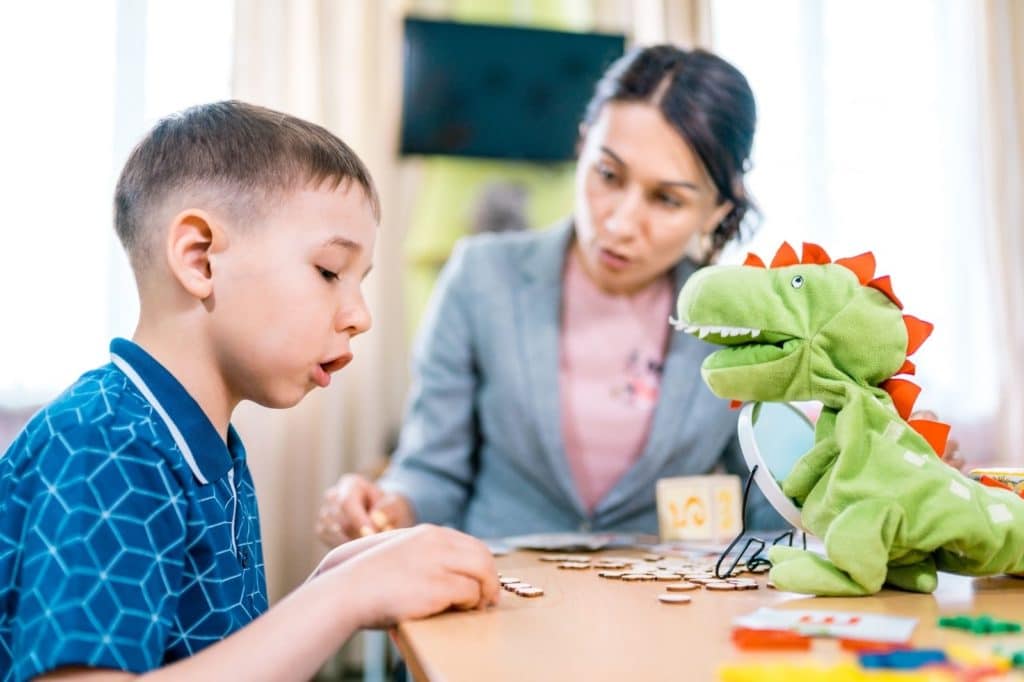It’s a common misconception that psychotherapy is a one-size-fits-all type of treatment (i.e., everyone undergoes the same kind of therapy). But there are actually many different types of mental-health treatments available to your child, ranging from traditional “talk therapy” to play therapy to many specialized variations of treatment.
While you don’t have to be an expert on mental health, it’s helpful to have a general idea of the most popular types of psychotherapy to understand the different types of therapy available to your child. Below are some of the most common types of therapy along with a brief description of each.
Cognitive Behavioral Therapy (CBT)
CBT is considered the “gold standard” for many mental-health disorders, including anxiety and depression. This type of therapy is based on the understanding that our thinking patterns and core beliefs influence our feelings and, consequently, our actions. For example, if your child believes: “I’ll never get the grades I want because I’m not smart enough,” they will feel discouraged and unmotivated in class, which will, in turn, affect their grades.
CBT can help your child identify these faulty thinking patterns (called cognitive distortions) and then change their thinking patterns and behaviors to encourage more positive outcomes. There are also specific forms of CBT that were developed to target issues such as insomnia and specific phobias.
Dialectical Behavior Therapy (DBT)
DBT, which expands on CBT theories, was originally developed to help individuals experiencing suicidal ideation and Borderline Personality traits. Because this type of therapy was so helpful for individuals experiencing such intense emotions, many of its techniques are now used to help people learn to tolerate uncomfortable emotions. The term “dialectical” (the D in DBT) refers to the integration of two opposing states, such your child feeling anxious about a test but also knowing that they’ve adequately prepared for it.
DBT teaches your child techniques to help them increase their ability to tolerate uncomfortable emotions instead of using to unhealthy coping mechanisms. For example, if your child is very anxious before a test, DBT techniques can help them use deep breathing, mindfulness exercises, and affirming statements to help them cope with their pre-test anxiety so that their anxiety doesn’t get in the way of their performance on their test.
This type of therapy is often very helpful for children experiencing depression, anxiety, suicidal ideation, and eating disorders, as well as for those having trouble regulating their emotions.
Applied Behavioral Analysis (ABA)
This type of therapy focuses on rewarding positive behaviors — to increase their frequency — and ignoring negative behaviors in order to distinguish them from acceptable behaviors. It also focuses on making changes in your child’s environment to help them use certain behaviors more frequently and other behaviors less frequently.
For example, a therapist might utilize ABA to help your child learn to sit in his or her chair in the classroom instead of getting up and wandering around in the middle of class. Or, a therapist might use this approach to help your child improve their language and communication skills. This type of therapy is often used to help children diagnosed with autism.
Art Therapy
Art therapy utilizes creative activities to help facilitate healing and insight. An art therapist might lead your child in painting, sculpting, or many other artistic media. This helps your child learn to express themself in a healthy and creative way. Art therapy can complement other types of therapy and help your child learn to express their emotions in a comfortable way.
Play Therapy
Since children often express themselves through their play, play therapy builds upon this principle. Play therapists harness this to help children work through separation anxiety, generalized anxiety, depression, trauma, self-esteem, and other issues by using the language children know best: play.
From sand trays to non-directive play to a variety of games, play therapists engage children by meeting them at their level instead of using the traditional “talk therapy” model of sitting across from one another and talking for 50 minutes, which can be uncomfortable and challenging for children.
Group Therapy
Like play therapy and art therapy, group therapy can take many forms. But they all center on bringing together a group of children who are struggling with similar challenges to help them learn from one another and support each other as they learn and practice new strategies. For example, a child might choose to participate in a social skills group if they are struggling to communicate. Another child might join a group of children whose parents have divorced.
Group therapy allows children to form relationships with their peers. It can be a very powerful and healing experience, especially because it helps the group members learn that they are not alone in whatever they struggle with.
Mindfulness
While this is not a particular form of therapy, it is a common therapeutic approach that is incorporated into many forms of therapy. Mindfulness strategies help children learn to let go of their worry about the past or future, accept any uncomfortable emotions they are currently experiencing, and focus on the present moment.
Common mindfulness strategies include deep breathing, guided imagery, engaging all five senses, and progressive muscle relaxation.










